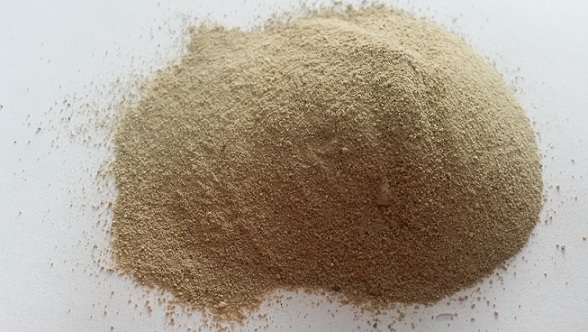Both natural materials (bleaching clays, natural bauxites and zeolites) and synthetic substances (silica gel, aluminum oxide, alumina silicate catalyst and synthetic zeolite) are used for adsorption purification of mineral oil.
Bleaching clay, silica gel, aluminum oxide and alumina silicate are used mostly for waste oil regeneration. Aluminum silicate used as adsorbents vary widely in chemical and mineral composition. Some of the bleaching clays are gaize, montmorillonite, kaolin, bentonite and other minerals. Bleaching clays are very inexpensive and commonly available, making them perfect for waste oil regeneration, usually in the process of contact purification. The adsorption capabilities of clay depends on the internal structure and is proportional to its porosity
Silica gel
Silicic acid hydrate is made of liquid glass solution with the help of hydrochloric acid. The settled substance is separated, washed, dried, heated and ground. Depending on the size of pores and bead shape, silica gel can have large or small pores. Large pore silica gel is used as an adsorbent for regeneration of waste mineral oils, especially those used in the electrical industry.
Bleaching clay
Natural bleaching clay adsorbents have found wide use in regeneration of used electrical insulation oils and in contact purification of mineral oils. Synthetic adsorbents are expensive; they are better for processes where they can be used multiple times. The need to restore the adsorbents complicates oil regeneration process due to additional equipment and labor required. The use of natural adsorbents, inexpensive and widely available, with high adsorption capability, is much better. Many types of clay have bleaching properties. The adsorption ability cannot be determined by chemical composition alone, since it depends on the physical structure of the media, which must have very developed surface, o.e. large amount of pores.
The following types of adsorbents can be used for regeneration of transformer and turbine oil:
- aluminum silicate sorbents (АСМ) for multiple use with increased physical strength and thermal stability and can be reused multiple times.
- regular naturally occurring adsorbents.
Zeolite
Zeolites are aluminum silicates which contain alkaline and alkaline earth metal oxides. They have regular pore structure, which are filled with water molecules in normal conditions. This water is released when the material is heated. Hence the name: zeo and lite – the boiling stones. The term zeolite was introduced over 200 years ago by the Swedish scientist Kronscheld.
Zeolite is widely used for dehydration of transformer oil and other specialized liquids. They also show promise in purification of oil drained from various machines. Zeolite pores are very fine; after dehydration this material can adsorb small molecules, mostly leaving the large molecules outside. Adsorption of various materials by natural crystalline adsorbents with molecule size pores is referred to as persorption, and such adsorbents are called molecular sieves. One of the properties of zeolite is its interaction with ground water, which contains many salts. Thus zeolite combines metal ions, aniones of silicic acids and water molecules.
The process of adsorption in zeolite is first of all defined by the structure of its crystals. Each silicon atom in silica dioxide and in silicates is bonded with four oxygen atoms. The atoms, via the oxygen bridge, form long chains or cycles. Ions with three charges replace ions with four charges in alumina silicates. The extra charge is compensated due to the equivalent charge of the metal ion.
The crystals from a honeycomb structure with molecular size cavities of mostly spherical shape, connected by small openings (“windows”). The walls of the cavities are formed by ions of silicon and other elements. Cavities take half of the crystal volume, each connected to the next cavities by windows in three perpendicular directions. The internal surface of zeolite is enormous.
Adsorption on molecular sieves is a physical phenomenon. The ideal reversibility of this process has been proven. It is known that due to differences in crystal size and shape, each zeolite can adsorb only certain substances. Natural zeolite is a mixture of many zeolite types. Synthetic zeolite, on the other hand, is produced artificially with almost identical pore size. This of zeolite has three specific benefits: high selectivity, high affinity to aromatic and unsaturated hydrocarbons due to heteroionic nature of the internal surfaces, high adsorption capacity and the ability to entirely extract the adsorbed material from the system.



